Female vets face more hurdles to help
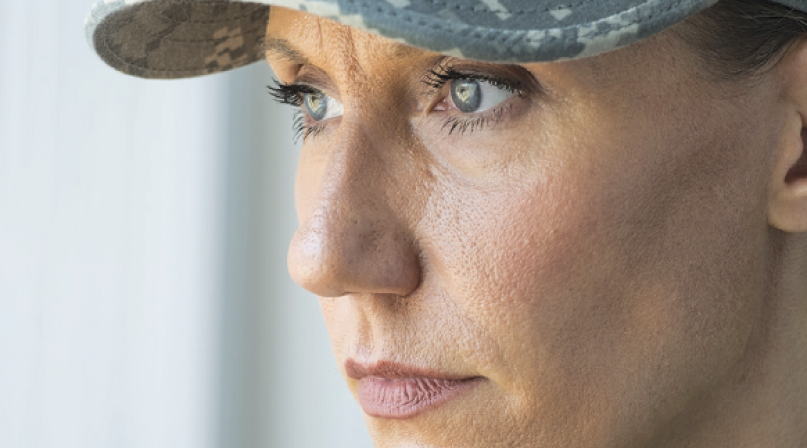
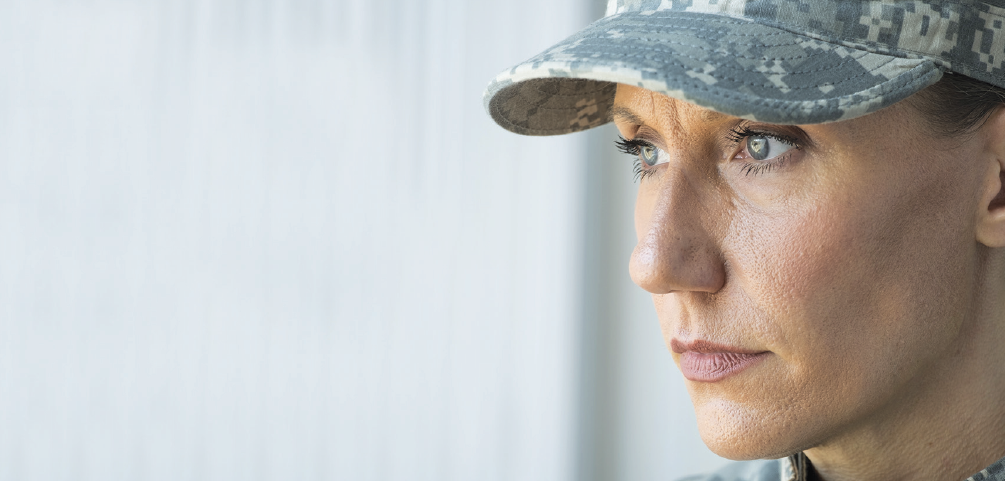
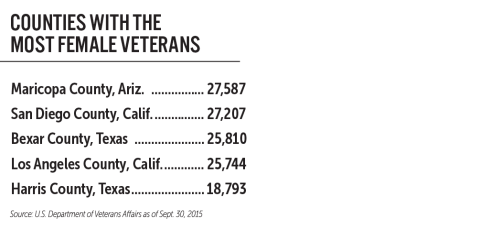
Share | @NACoTweets: Women are becoming a bigger slice of the overall veteran population |
10 percent of the overall veteran population, but sometimes they’re even harder to find than the statistics indicate.
One of the persistent features of the population, which contributes to it being underserved, is that women tend to self-identify, or broadcast their veteran status, much less than men.
“Most of us don’t go around wearing Navy ball caps, wearing shirts that say what branch we served in,” said Stephanie Stone, deputy director of the Los Angeles County Department of Military and Veterans Affairs. “So we don’t get to commiserate like our male colleagues, seeing someone else on the street and connecting on that level. They’re not going to the VFW and trading war stories the way our parents did.”
But that’s just the surface.
“Because they don’t self-identify, because they don’t have an opportunity to connect with each other, they often don’t know their benefits,” Stone added. “We don’t get to recognize them for who they are. We come home (from the service), we take off our uniform and let our hair down and nobody stops to think, and ask us if we’ve served.”
For Sylinthia Burges, an Army veteran from the early ’80s, it happens even in her office at Nassau County Veterans Services office in New York, where she is a veterans counselor.
“A lot of veterans come into my office and see me, and assume I’m just a woman that got the job, they don’t realize I’m a veteran,” she said. “I assure them you have to be a veteran to work here, but there are a lot of misconceptions about how much women have served, and I think more recognition might be our greatest need.”
Susan Lewis, women’s veteran coordinator in Travis County, Texas and a veteran of Operation Desert Storm, has had her status questioned.
“They sent me to the ladies’ auxiliary at (a veterans’ organization),” she said of a time she lived in Georgia. “I’d come back and they’d scrutinize my ID for a few minutes before letting me in. Then they were really hesitant to talk freely; I’m not sure it was because they were going to be polite because I was a woman or they thought I wouldn’t understand.”
Incidents like this lead Burges to suggest it wasn’t enough for counties to simply advertise special services for female veterans, that an active outreach effort may be what it takes.
“Make sure you’re targeting them specifically,” she said. “Don’t assume because you do a general outreach that you’ll get them. They have to know they’re wanted, because they often won’t come out unless they know that.”
An approach that capitalizes on group dynamics can help, Burges added.
“We do better when we function in groups,” she said. “An all-female group can be really good. You can talk about issues you couldn’t with your male counterparts.”
Chief among those issues is military sexual trauma, something one-in-four female active duty veterans has experienced, according to the Veterans Administration.
But it’s often not the first issue on veterans’ minds.
“I very seldom have a woman who comes in here and says ‘I’m having nightmares because I was raped on active duty,” Lewis said. “They don’t come in with that. It’s another issue that stems from that trauma.”
Lewis has had a lot of success partnering with the YWCA.
“They’re reputable, they’ve been helping women for years and helping women veterans before people talked about them,” Lewis said. “I have some women veterans who have been traumatized, and they either don’t have enough time in service or they’re so suspicious that if they go to the VA it will get back to their command, so the YWCA is perfect for me to send that group of women to.”
Los Angeles County has held monthly programs aimed at women veterans, which draws a crowd of at least 60 attendees. Stone has counselors on hand at the events, just in case emotional trauma surfaces.
“At some point, you start making the assumption that everyone in the room has been the victim of an assault and you prepare for that, make staff available,” she said.
Gender dynamics complicates another problem experienced by some vets — homelessness.
“Not only are we more likely to be homeless, but once we are, there’s a much greater chance a homeless woman will be assaulted,” Stone said.
Shelters often offer more problems than fixes. Space is limited, and many don’t allow males over the age of 13 to accompany their mothers and sisters.
“So they have to go live with the rest of the male population in a shelter,” Lewis said. “That’s a terrible idea.”
And the point at which homeless benefits are activated are often far too advanced, she added.
“There are not enough resources for intervention,” she said. “You have to be practically living under a bridge before you get some help.”
Without preferences favoring women veterans, Stone said, the wait for housing just goes on, seemingly indefinitely.
“We stand in line with the men, we’re not getting preferential treatment,” she said. “The challenge is getting property owners to open their hearts and homes to veterans, to getting them to accept vouchers. There’s not much material incentive because there’s a lot of paperwork that goes into it, and if they put the vacancy on the open market, they’ll make more money and the property will be off their hands pretty fast.”
There’s also a cultural battle female veterans may fight within their gender.
In Travis County, Lewis reports that some women veterans are put off by the clout and attention that military wives command and demand from the public at large.
“Some spouses — and let’s face it, 80 percent are going to be women — feel entitled; they say ‘I’ve put up with this for x amount of years,’ which is certainly true — and it’s not easy being a dependent in the military — but, you didn’t put on the uniform, and you didn’t deploy to the Middle East,” she said. “That doesn’t happen with men. But could you imagine if it did?”
While the resources and general approach to helping female veterans lags, Lewis sees a lot of positives, in large part because women-specific programming is so new, it doesn’t have to support years of legacy programming.
“We’ve come a long way, but we still have a long way to go. I’d like to see women leading more veteran organizations. Not just window dressing — leading. Making decisions, having influence.”
Attachments
Related News
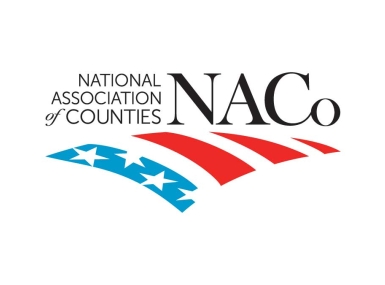
Counties Mark Five Years of Operation Green Light for Veterans
County buildings and landmarks light up in green November 4-11, showing support and highlighting resources available for veterans and their families
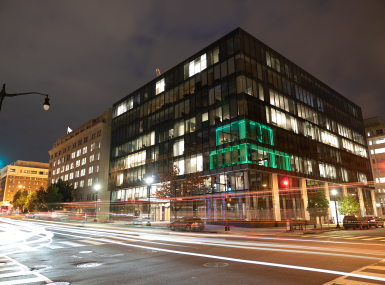
Highlights from 2025 Operation Green Light for Veterans
Operation Green Light for Veterans returns. Explore highlights from counties across the country.
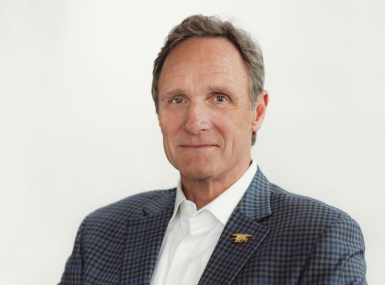
County service meets a veteran’s need for purpose in Spotsylvania County, Virginia
After Drew Mullins transitioned from a high-performance lifestyle in the military, he found the environment and purpose he sought when he took office in his county.
